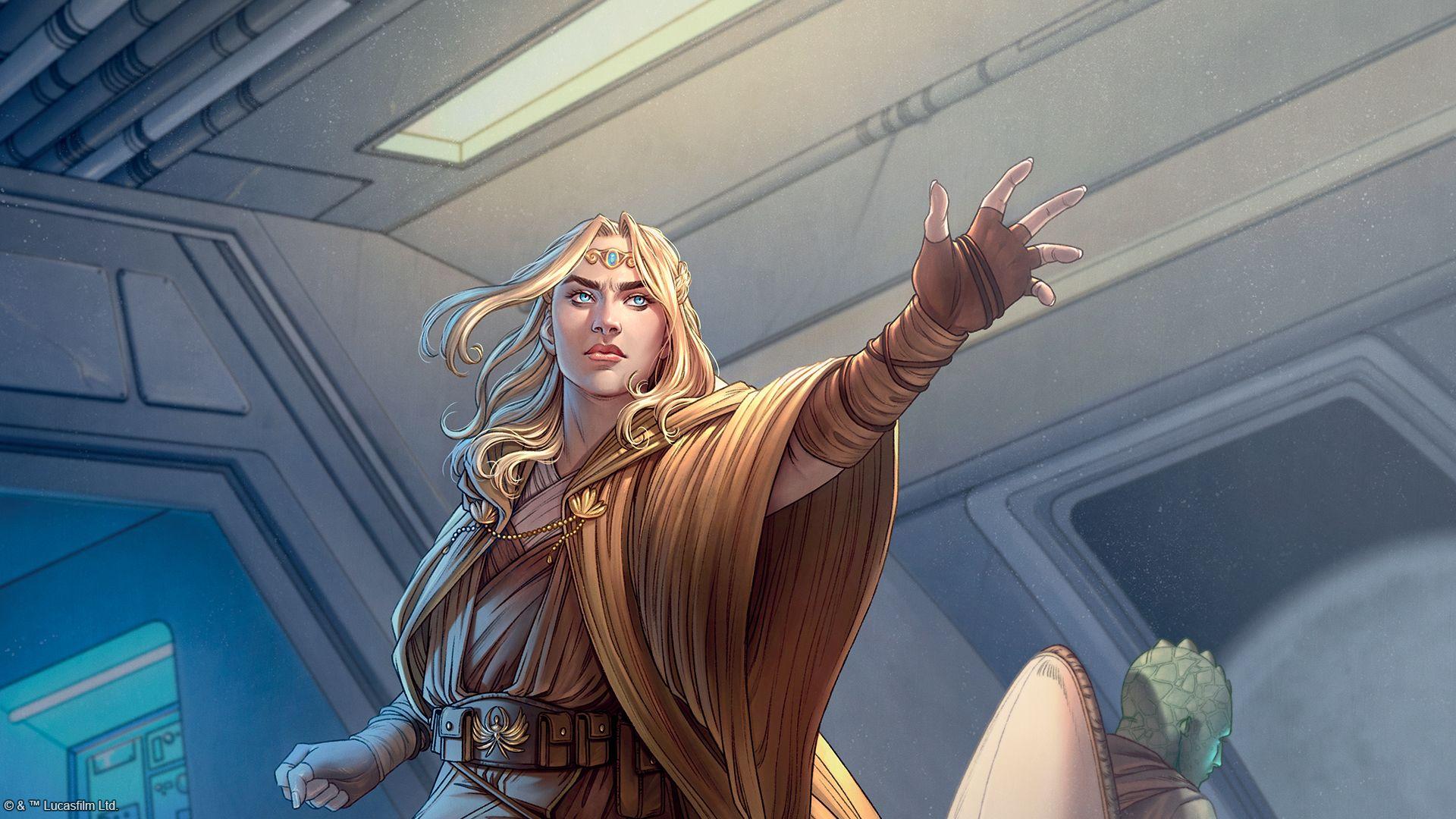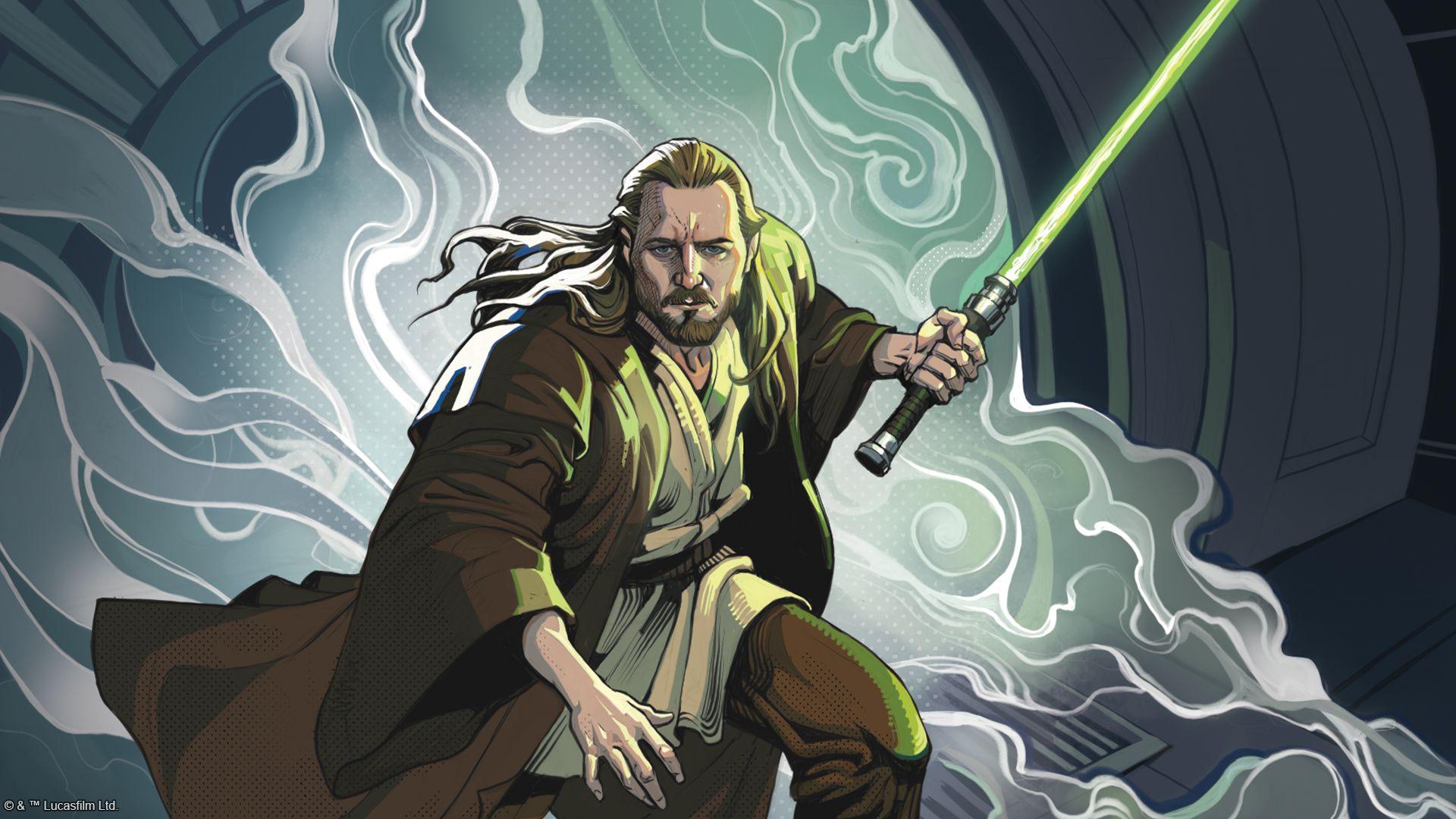Building a Fleet
May 28, 2025 | Written by Ben Weiner
The current set of the Star Wars™: Unlimited trading card game, Jump to Lightspeed, introduces the Piloting mechanic, allowing players to now have the full breadth of the Star Wars galaxy at their fingertips. It helps shift from what was predominantly a battle between iconic characters on the ground to now being up in the stars with a new lineup of pilots, fighters, transports, capital ships, and other vehicles. This set has nearly doubled the space unit card pool by adding an astonishing 91 more ships, and there are 40 Pilot cards on top of that.
Let's take a look at some of the popular ships players have been using in their decks from throughout the game's life and see how they might now evolve with the addition of these new cards!

Millennium Falcon
From the very beginning, Star Wars: Unlimited brought us perhaps the most iconic spaceship in the galaxy with the Millennium Falcon (Spark of Rebellion, 193). Regardless of what Luke Skywalker or Rey would call it, this first iteration is anything but junk. The Falcon's 3 power and 4 HP for only three resource cost makes it a significant threat that cannot be ignored, and the ability to enter play ready can surprise any opponent by either getting a jump on them in the early rounds of a game or as a final action to close out a match.
This iteration of the Falcon has already seen top-level play in multiple, and now Han Solo (Jump to Lightspeed , 203) makes the Falcon even more formidable. The bonuses to power and HP are nice of course, and they're in line with the two resources to play Han as a Pilot upgrade, but the real benefit is the ability to attack with the Falcon immediately, which saves an action. Then the cherry on top is that the defending unit takes its damage first, which means the upgraded Falcon can take out a unit with 5 remaining HP without even getting a scratch.

Fett's Firespray
Fett's Firespray (Spark of Rebellion, 184) is a clear favorite of players and often gets called the most feared bounty hunter ship in the galaxy. It was a significant space unit to be reckoned with from the outset of the game. It easily fit into decks with either of the two leaders that it specifically mentioned, Boba Fett (Spark of Rebellion, 15) and Jango Fett (Twilight of the Republic, 16), before their suspension. Now, it gains some massive advantages as it can be piloted by two versions of Boba Fett from Jump to Lightspeed.
The new leader version of Boba Fett (Jump to Lightspeed, 9) makes Fett's Firespray simply massive. Once you get to six resources, the ship deploys, becomes ready immediately, and then with your next action, Boba Fett can board his already feared transport to add another 4 points to both power and HP, boosting the upgraded unit into a 9/10 beast that is now also a leader unit. Dealing four points of damage on top of that—split up between any units you want—is just a bonus at that point. After that, attacking your opponent's base or taking out nearly any other space unit is some super sinister fun.
If you don't want to use Boba Fett as a leader, there's still a great option for upgrading Fett's Firespray with his new unit version. This version of Boba Fett (Jump to Lightspeed, 189) provides a nice boost to both power and HP, which means the ship becomes a 7/9 unit. Then, since the Firespray is a Transport, you also get to deal 2 damage to a unit at the same time!

Green Squadron A-Wing
The Green Squadron A-Wing (Spark of Rebellion, 141) has been one of the best round-one units that a Heroism-Aggression deck could play. Two resources for a 1 power, 3 hit point unit is fine, but with the addition of Raid 2, it becomes a serious unit to contend with in the early game, especially when paired with Rebel synergy cards, such as Fleet Lieutenant (Spark of Rebellion, 240) giving it an additional bonus on attack during the second round.
The new leader version of Poe Dameron (Jump to Lightspeed, 13) has the matching Aggression aspect and combos extremely well. Playing the A-Wing in round one first, you can attach Poe as an upgrade in round two, which boosts the little fighter up to 3 power and 4 HP. Paired with a Cunning aspect base, the remaining two resources could be used for a Surprise Strike (Spark of Rebellion, 220). The resulting attack would hit an opponent's base for eight points of damage after all the bonuses—on the second round!
Another great pilot that could jump into the cockpit of the Green Squadron A-Wing in round two is Chewbacca (Jump to Lightspeed, 103). The resulting upgraded unit has 4 power, 7 HP, can attack for six damage with its Raid 2 ability, and is impervious to many cards that your opponent would use to try to defeat it or return it back to your hand.

Avenger
When you sit across from your opponent and they pull a Villainy-Vigilance leader from their deck pod, you immediately know your game plan has to be to win before the Avenger (Spark of Rebellion, 40) enters play. This capital ship has been the bedrock of any deck that wants to push the game into later rounds.
Avenger's text reads: “When Played/On Attack: An opponent chooses a non-leader unit they control. Defeat that unit.” This means your ability to keep the Avenger in play can be just as important as playing it. Where former Admiral Ozzel failed as captain of the Avenger, Iden Versio (Jump to Lightspeed, 36) can really shine. Iden turns the Avenger into a true representation of the Empire's might by giving it the extra protection of a Shield token as well as larger power and HP.
You can take this a step further by playing under the command of Admiral Piett (Jump to Lightspeed, 5) as your leader, who can make all of your Capital Ship units cost one or two less resources to play.

Kylo's TIE Silencer
Kylo's TIE Silencer (Shadows of the Galaxy, 135) burst onto the scene when the second set was released. Villainy decks that had lacked aggressive low-cost space units up till that point suddenly had a great new toy to play with.
We don't have a Kylo Ren Pilot card yet, but we do have his grandfather. Darth Vader (Jump to Lightspeed, 142) can jump into the TIE Silencer to create an incredibly threatening presence in the game starting in round two. Boosting the ship's power up to 6 and its HP to 5, Vader also gives an extra benefit with his ability that allows the upgraded space unit to deal 1 damage on attack, allowing it to take out an opposing unit with up to 7 HP, which is enough firepower to take down Home One (Spark of Rebellion, 102) or smash through the defenses of Bright Hope (Spark of Rebellion, 99).

Bright Hope
Speaking of Bright Hope, there has been no better Rebel space unit capable of protecting your base and other space units with Sentinel since the game's beginning. With 6 HP, it is often able to withstand multiple attacks before being defeated.
A simple Astromech Pilot (Jump to Lightspeed, 57) can help keep the Bright Hope around for even longer. After the Bright Hope sustains its first attack, the Astromech can not only heal some of that damage from the Rebel transport, but then also buff it up with an additional 3 HP. If the little droid helper is on the Bright Hope without any damage taken, then it would take some mighty Star Destroyers to bring the transport down in one attack.

Red Five
Red Five is one of the more recognizable call signs in the entire Star Wars galaxy. Now Red Five (Jump to Lightspeed, 151) joins the fray in Star Wars: Unlimited, and it would not be complete without its pilot, Luke Skywalker (Jump to Lightspeed, 12).
The synergy between this fighter and its pilot is truly incredible. Early in a game, Luke's leader ability can be triggered after Red Five makes an attack. When you control six resources is when the fun really begins. Luke can deploy as a pilot onto Red Five, bumping the power up to 7 and HP up to 9. Because you can choose the order of the On Attack triggers from the two cards, Luke can do three damage to a target and then Red Five could add its two points to the same target (which is now damaged) or pick off another damaged unit.
The extra advantages of this fun two-card combo are that Luke helps protect Red Five by making it a leader unit, and he himself is tricky to defeat given that most enemy card abilities are completely ineffective against him.
You can make it complete by adding in R2-D2 (Jump to Lightspeed, 245) at any point to boost Red Five just a little bit more!

Victor Leader
Victor Leader (Jump to Lightspeed, 85) comes in hot on the tail of Red Five, with Darth Vader (Jump to Lightspeed, 6) alongside Wingman Victor Two (Jump to Lightspeed, 84) and Wingman Victor Three (Jump to Lightspeed, 86) trying to hold off the rebellion from their attack on the Death Star.
Just like with Luke and Red Five, Darth Vader has excellent synergy with Victor Leader. His leader ability allows you to create a TIE Fighter token every turn that you attack with a non-token unit. Victor Leader then gives each of these units +1/+1. Deploying Vader at 6 resources onto Victor Leader makes it a 7 power, 9 HP unit, just like Red Five with Luke. On top of that, Darth Vader also brings along 2 TIE Fighter tokens, which are 2 power and 2 HP each because of Victor Leader's ability. That's just enough TIE Fighters to bring his wingmen into the fray, creating quite the fleet for the rebels to fight their way through.
Luke may have won the day in Star Wars: A New Hope, but with Victor Leader and its fleet of TIE Fighters led by Darth Vader at the helm, maybe you can change the outcome!

Jump to Lightspeed brings a lot of fun interactions to Star Wars: Unlimited. It does an excellent job of bringing the excitement of what it felt like for Admiral Ackbar and Admiral Piett to face off with their respective fleets, each with everything at stake. Now, you can build your own fleet and take command of the battle among the stars!
Share This Post



